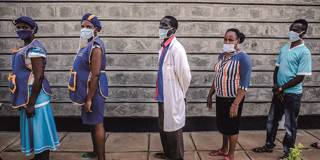The pandemic is a stark reminder that gender is a powerful, deep-rooted, and universal social determinant of health. Ushering in the healthier societies we seek requires viewing gender equality as a public good.
LONDON – “Is my lipstick protecting me against COVID-19?” ranks as one of the more intriguing email queries we have received from a member of the public since we began coordinating the world’s largest tracker of sex-disaggregated data on the pandemic. In fact, the question points to an important universal truth regarding public health.
We established the tracker in March 2020 because we thought that COVID-19 was unlikely to be equally distributed in any population. That hunch has proved correct. Our data show, for example, that women are more likely than men to get tested (and vaccinated) for COVID-19, less likely to be hospitalized, much less likely to have a severe infection requiring admission to an intensive-care unit, and around 30% less likely to die from the disease.
More generally, the pandemic has shone a much-needed light onto unequal health and well-being, and laid bare the relationship between inequality and disease. It has highlighted unequal risks within societies – with marginalized populations and those who have suffered historical and contemporary injustices reporting higher rates of COVID-19 – and unequal burdens between societies.

LONDON – “Is my lipstick protecting me against COVID-19?” ranks as one of the more intriguing email queries we have received from a member of the public since we began coordinating the world’s largest tracker of sex-disaggregated data on the pandemic. In fact, the question points to an important universal truth regarding public health.
We established the tracker in March 2020 because we thought that COVID-19 was unlikely to be equally distributed in any population. That hunch has proved correct. Our data show, for example, that women are more likely than men to get tested (and vaccinated) for COVID-19, less likely to be hospitalized, much less likely to have a severe infection requiring admission to an intensive-care unit, and around 30% less likely to die from the disease.
More generally, the pandemic has shone a much-needed light onto unequal health and well-being, and laid bare the relationship between inequality and disease. It has highlighted unequal risks within societies – with marginalized populations and those who have suffered historical and contemporary injustices reporting higher rates of COVID-19 – and unequal burdens between societies.